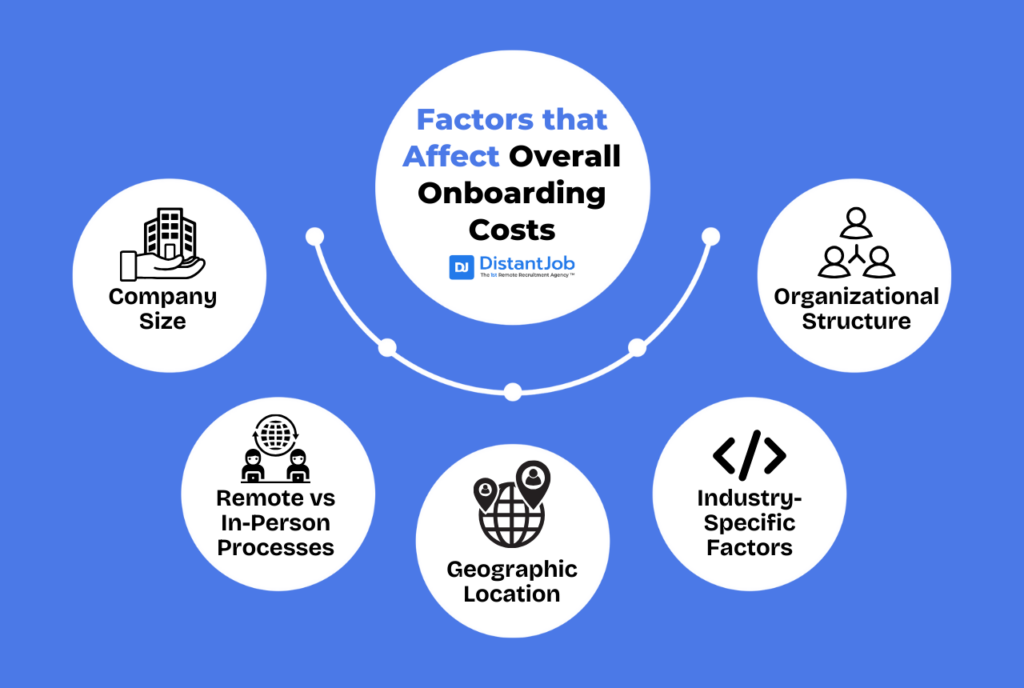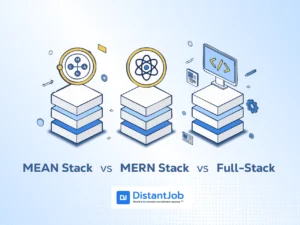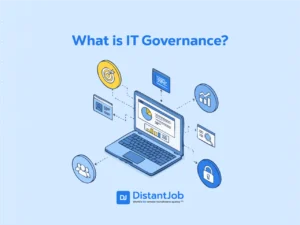Onboarding is no longer just a paper-pushing exercise; it is an essential step in improving employee retention and productivity. But how much does it cost? The average onboarding process for small U.S. companies ranges from $600 to $1800, while big organizations in the U.S. can spend over $3000 per employee. Best-in-class companies, however, invest 15–20% of an employee’s first-year salary on onboarding. Not surprisingly, companies that offer higher salaries tend to spend a similar percentage of those salaries on onboarding. The office world has finally come to understand just how truly important onboarding is.
This article will go more in-depth about the onboarding expenses and its full process and how industry demand, education, and location can have a direct impact on those costs.
Why Does Onboarding Matter?
While there are many potential answers to this question, the clearest is that an ineffective onboarding process could cost you over 20% of your new staff within the first 45 days of employment.
Considering the significant investment you’ve already made in the recruitment process, I’m sure you don’t want to start that process again so soon.
Consider the productivity of your existing staff as another reason to invest in onboarding. One of the key reasons you recruited a new person was because you were shorthanded. If the person you hired leaves before contributing anything to your company, not only will you have failed to alleviate the challenges caused by a lack of manpower, but you will have added to the chaos.
Frustration and chaos can carry over to your existing team and even affect your company culture.
Now, let me give you the flip side: Proper onboarding can actually increase productivity. Statistics show that companies with better onboarding programs experience a 70% boost in productivity. Proper onboarding makes new employees more effective because they will better understand the company, the culture, the tools you use, and their work environment.
Breaking Down the Costs of Onboarding
Each phase of the onboarding process requires different resources, and these resources are what define the expense. Let’s examine each one and the resources used:

Immediate Costs
The direct costs of onboarding are defined as expenses that have a direct relationship with the onboarding process and, therefore, can be assigned directly to specific employees.
These direct costs include administrative staff time, specifically from the HR team. Their cost would be around $40 per hour for 20-30 hours to handle pre-boarding and orientation, totaling $1,200–$1,500 for this category alone.
The tools your staff uses could include:
- One of the best onboarding systems for small to medium-sized businesses is Basecamp, which is $180 per month.
- Slack is used for async communication and document delivery, costing $8 per month.
- Microsoft Office 365 with Microsoft Teams is a communication and document delivery tool, costing $12 per month.
Indirect Costs of Onboarding
Indirect costs are general, long-term expenses that don’t tie directly to the hiring of a new candidate.
You’ll incur many indirect costs such as the manager’s time mentoring, legal, compliance, and
documentation costs, and even feedback and evaluation tools.
While these expenses are often difficult to track, they still play a significant role in the overall onboarding process and should be processed into the onboarding equation.
Factors that Affect Overall Onboarding Costs

Some costs involved in onboarding are not direct or indirect. Truly understanding one’s business origin, company structure, and several other elements that I will discuss next could increase or reduce the cost of onboarding.
Your Company Size
Large companies have a two-edged sword in their hands when it comes to onboarding. On one edge, there’s the fact that their operations are bigger and more complex, and they have more people working from them in different departments, which makes their onboarding processes more costly, at least initially.
On the other edge, while the initial investment tends to be higher, they can spread out these costs, lowering the onboarding cost per hire over time. This can happen because once their process is in place, they can scale it and use the procedures already in place.
This way, large businesses tend to spend more upfront, lowering their costs as time goes on, while ensuring smooth onboarding for their new team members.
Now, when it comes to small to medium-sized companies, things are very different. Their onboarding is much simpler, much less formal, which makes it also much cheaper. The truth is, they might even need more complex processes in place, but they don’t have the dedicated personnel or the right systems. So, although their onboarding may cost less, it might not be as effective as the ones in large companies, which can result in other costs down the line.
And there’s something else to consider, which is the fact that without the right HR people to handle onboarding in smaller enterprises, managers and leaders will have to, as we’ve already mentioned in the indirect costs of onboarding #3.
So, in the end, although onboarding costs are initially somewhat lower for smaller to mid-sized companies than for the larger ones, the only way to make sure they stay that way is through establishing a strong process, making sure you don’t lose your new hires or take too long to get them to productivity.
Organizational Structure and Culture
As with company size, your company structure and company culture make an impact. If you have a well-organized company, where every department knows what it’s doing, every person understands their role, and where a strong company culture exists, it’s much easier for the new employee to understand their surroundings and integrate more quickly.
A well-organized company that has proper procedures in place will experience a smoother onboarding process with fewer mistakes. Those factors might not always show up in the onboarding statistics, but the fact is that a better, faster onboarding experience makes the employee adapt better and allows for a shorter process.
A lack of structure could provide the opposite effect, confusing the new staffer and increasing the chances that they will leave. Focusing on structure and culture might not be measured in onboarding costs, but rest assured that it will impact your bottom line through reduced churn and a more productive employee.
Remote vs. In-Person Processes
This one should be obvious. If onboarding is done remotely, the cost should be less, simply because remote onboarding only requires software and hardware, and those costs are already accounted for, as mentioned in the 3rd point of direct costs.
There are many other expenses involved with in-person onboarding, such as exclusive office space dedicated to the onboarding process, transportation fees, coffee, snacks, meals, and—unlike what we’re doing here by using dollar values—location. The cost will differ drastically from country to country and from city to city.
Role Complexity and Industry-Specific Factors
Not all jobs are the same and we all know that. With each job, comes its own requirements and specificities, which means that depending on who you’re onboarding, you’ll need different ways to do so.
For example, some roles require more specific deep knowledge, which in turn require expert people in charge of training, specific materials and equipment, increasing the costs.
Now, if you’re in an industry where there are heavy regulations, as is the case for healthcare and finance, you might need to dig in your pockets a bit more for compliance training and certification.
Duration and Depth of the Onboarding Program
And last, but not least, always factor in how long you want your program to be, and how deep it must be. Longer, more in-depth onboarding programs tend to have a much higher initial cost, but can definitely save you money later, as they result in higher employee retention, productivity, and overall work quality.
Now the shorter and more superficial ones can work, there’s no doubt about that. But they tend to work better when you hire really well knowledge and skill-wise, and also culture-wise. And that doesn’t mean these new employees won’t need you later on. So make room for prolonged support as they start taking their steps within the company.
What Is the Cost of Onboarding an Employee in the US?
There are many factors involved, which are not necessarily related to recruitment and salary but could be related to the actual role, company size and structure, the length of the onboarding process, and your company location. So how much will it cost to onboard a new employee?
- Administrative tasks cost around $400 per employee.
- Productivity is at an all time low for new employees, as they only reach 25% efficiency in their first month, and it can take them up to 26 weeks to get back to their real professional selves and deliver at their highest potential.
- When it comes to setting up new employees’ workspaces, it can cost anywhere from $500 and $1,000 or even more, depending on their role and the industry you’re in.
- Besides, if you’re on to offer welcome packages, expect to spend from $20 to $100 for each new person coming in.
- Now, if you’re relocating your people, that gets much steeper, as these expenses can go from $21,327 to as much as $79,429, depending on how far you’re moving them, where you’re moving them (big expensive cities, for example), and how difficult the move is (think international or removed places).
- And, obviously, the training part of the onboarding process, which tends to amount to about $1,300 per employee.
And there you have it: a few numbers to help you get an idea of how expensive (or cheap) it can be for you, which can definitely help you structure an onboarding process that is both effective and cost-effective.
Cost of Onboarding Globally
If you’re looking into global talent mobility as a strategy for your business, then it’s important to know how much it would cost for you to onboard your new international talent. To help you do that, here’s a breakdown of average onboarding costs across different regions with country-specific information:
Global Onboarding Costs per Country
| Country | Onboarding Cost (Local Currency) | Onboarding Cost (USD Equivalent)* |
| United States | $1,200 | $1,200 |
| United Kingdom | £800 | $1,000 |
| India | INR 40,000 | $500 |
| Australia | AUD 1,500 | $1,000 |
| Japan | JPY 150,000 | $1,000 |
| Brazil | BRL 2,000 | $400 |
| Germany | €1,000 | $1,100 |
| South Africa | ZAR 10,000 | $530 |
| China | CNY 8,000 | $1,200 |
| Canada | CAD 1,400 | $1,100 |
*These USD equivalent costs are rough estimates, based on general exchange rates. And they can change at any time depending on current exchange rates, so make sure to confirm them before making any decisions.
4 Tools and Calculators to Help you Figure Out What Onboarding Will Cost You
We’ve gone over the numbers, but they’re average and general. To make sure you get the right number down, and don’t burn through your budget, here are 4 tools we recommend:
- Academy Ocean Onboarding Cost Calculator: With this one you can calculate both direct and indirect costs, while factoring in how many new hires you’re bringing and how long onboarding will take. It’s simple and easy to use.
- HR Cloud Onboarding ROI Calculator: This one focuses on ROI, by looking at turnover rates and productivity gains. Great tool to see how onboarding will affect your finances.
- Qualee Onboarding ROI Calculator: Besides helping you figure out training costs, also evaluates how fast new hires become productive and how many leave. Their idea is to provide users with insights that’ll improve their long-term onboarding strategies.
- Tinqwise Onboarding Cost Calculator: Tingwise is more comprehensive and thorough, giving you costs such as direct and indirect, besides hiring and training. It also looks at engagement and turnover rates by looking at how quickly you’re getting them up to speed.
Our Advice to You: How We Cut Down Onboarding Costs with a Worldwide Approach
When you’re running a business, every dollar counts, and using each one wisely does too. Here at DistantJob we believe in that too, and so we’ve created a system that ensures both quality and cost savings. So how do we do that, and you can too?
First of all, consider global hiring instead of trying to fish from your local pool (where normally salaries are higher and so are onboarding costs). That’s what we do. Instead of hiring North American employees, who charge a lot more, we invest in skilled workers from countries like Brazil or India. This is a tested and tried strategy that reduces overall costs, while boosting productivity and engagement.
Secondly, definitely team up with recruiters and headhunters. We say that because when you hire right, and onboard properly, you save long-term since you won’t have to deal with high turnover rates. That’s what we do, because hiring the right person for the job that also matches your company culture, is a clear path for success.
Third, use technology to your advantage. We do so. Since we operate fully remotely, we cut down on in-person onboarding expenses. Besides, by having an onboarding process in place and using the right tools to implement it, we guarantee effectiveness, depth, and just the right amount of time dedicated to it, getting our people ready for what they came here to do. Our favorite ones are HR Cloud and Basecamp, as they make our digital onboarding smooth and low cost.
Fourth, get yourself a pre-boarding process. Who says new hires can only know what they’ll be doing, what tools they’ll be using, and other important things, on their first official days? By pre-boarding them, which means starting communication right after the contract has been signed, alleviates tensions and anxiety, and allows your new employee to join the team on the first day. Of course, this does not mean start training before they actually start. This means setting up email accounts and other accounts they’ll be using, allowing them time to download software and login, and get a feel of what they’ll be using and what the company is like.
And now, rounding out our list is mentorship and continuous feedback. New employees will surely have doubts and hit roadblocks after onboarding, and that’s why it’s so important to pair them with mentors—be it their leaders or coworkers— so they always know who to reach out when in need. Besides, continuous feedback allows for continuous growth and open and clear communication, that are definite factors in taking teams and businesses forward.
The Bottom Line on Onboarding
In sum, as you can see, onboarding costs vary much, depending on your industry, where you’re located, how you operate (either in-person or remotely), the roles you’re onboarding for, and so on. And although we can have some estimates, it’s important you sit down with your team, and calculate them according to your specifics.
What we can say is that investing in onboarding pays off, since it reduces long-term costs (by increasing your employee retention and productivity, thus reducing your turnover rate), which ultimately increases your ROI.
Our advice to you is that you include pre-boarding to your onboarding process, implement the right tools, and definitely consider hiring right by hiring globally. You can do that by teaming up with a dedicated staffing agency such as DistantJob. With our access to top candidates from all over the world, we help you build a team that’s ready to hit the ground running, and take your company to the next level. Book a discovery call now, and we’ll show you how.





